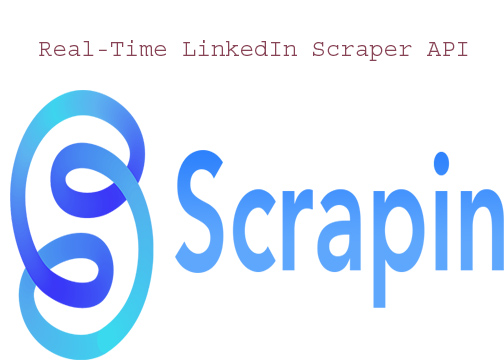What is Real-Time LinkedIn Scraper?
A real-time LinkedIn scraper is a tool or software designed to extract data from LinkedIn profiles and other LinkedIn pages instantaneously. Businesses, recruiters, and marketers use these scrapers to gather valuable information such as contact details, job titles, company names, and other professional data, usually to aid in lead generation, market analysis, or recruiting. The real-time functionality means the scraper retrieves data immediately as it’s available on LinkedIn, ensuring that the information is current and accurate. This is especially helpful for businesses and professionals needing up-to-date data for timely decision-making and outreach efforts.Key Features of a Real-Time LinkedIn Scraper:
- Instantaneous Data Extraction: Data is retrieved and displayed as soon as it is available on LinkedIn, reducing data lag.
- Automated Lead Collection: It automates lead collection, saving users significant time compared to manual collection.
- Customizable Fields: Allows users to target specific data points, from names and emails to industry, job title, and company size.
- Integration Capabilities: Many scrapers integrate with CRM and marketing automation platforms, directly funneling the data for immediate use.
Note: LinkedIn's terms of service prohibit unauthorized scraping, so ensure that any tool complies with LinkedIn's policies to avoid potential legal issues.
Comparing the 7 Best LinkedIn Scraping Tools of 2024
- PhantomBuster
- Overview: A versatile automation tool that can scrape LinkedIn profiles and other data while mimicking human behavior.
- Best for: Marketers needing large-scale LinkedIn data scraping.
- Key Feature: Cloud-based and compatible with Google Sheets and CRMs.
- Zyte (Scrapy Cloud)
- Overview: A powerful scraping tool offering customizable LinkedIn scraping solutions.
- Best for: Companies needing highly customizable scraping with proxy management.
- Key Feature: Robust API access for enterprise use.
- Octoparse
- Overview: A no-code scraper that’s user-friendly, ideal for non-developers.
- Best for: Small to medium-sized businesses.
- Key Feature: Drag-and-drop interface for quick setup.
- SalesQL
- Overview: A LinkedIn-focused scraper specifically designed for gathering contact data from LinkedIn profiles.
- Best for: Recruiters and lead generation teams.
- Key Feature: Includes email discovery for verified contact information.
- TexAu
- Overview: An automation tool built for LinkedIn with various workflow templates.
- Best for: Digital marketers.
- Key Feature: Workflow automation for LinkedIn data.
- LinkedIn Lead Extractor
- Overview: A simple, targeted tool for scraping LinkedIn leads.
- Best for: B2B sales teams.
- Key Feature: Quick contact data export to CSV files.
- ParseHub
- Overview: A highly customizable web scraper with advanced capabilities.
- Best for: Companies needing detailed LinkedIn data.
- Key Feature: JavaScript support for capturing dynamic content.
Real-Time LinkedIn Scraper API
A Real-Time LinkedIn Scraper API is a specialized API designed to extract data from LinkedIn pages and profiles instantly. This API allows users to request information in real time, making it particularly valuable for industries that rely on up-to-date LinkedIn data, such as recruitment, sales, marketing, and market research. The API can streamline data retrieval for essential LinkedIn fields, including job titles, company names, contact information, experience, education, and more. Users access these data points using API calls, which query LinkedIn and return structured data, typically in JSON format, for easy integration with CRMs, databases, and applications.Example API Call to a Real-Time LinkedIn Scraper
The following example demonstrates an API call to extract article content from a specific LinkedIn post. This API call usesGET and targets a particular URL using X-Rapidapi-Key for authorization.
Example GET Request
GET /get-article?url=https%3A%2F%2Fwww.linkedin.com%2Fpulse%2Fhidden-costs-unreliable-electricity-bill-gates%2F HTTP/1.1 X-Rapidapi-Key: 1c5aa52ba0mshf4d1cc6514e46f4p186677jsn8c053d484e31 X-Rapidapi-Host: linkedin-data-api.p.rapidapi.com Host: linkedin-data-api.p.rapidapi.comBreakdown of the Request
GET: The HTTP method to request data from the server./get-article?url=: Specifies the endpoint for retrieving the article content and includes a URL-encoded LinkedIn article link.- URL-Encoded Article Link: The link to the LinkedIn article is URL-encoded (
https://www.linkedin.com/pulse/hidden-costs-unreliable-electricity-bill-gates/) so that special characters are properly interpreted by the API server. X-Rapidapi-Key: This is the authorization key used to authenticate the request with the RapidAPI platform. Replace the key with your own valid API key.X-Rapidapi-Host: Specifies the RapidAPI host for LinkedIn data access.Host: Defines the host server for the request, which in this case, islinkedin-data-api.p.rapidapi.com.
